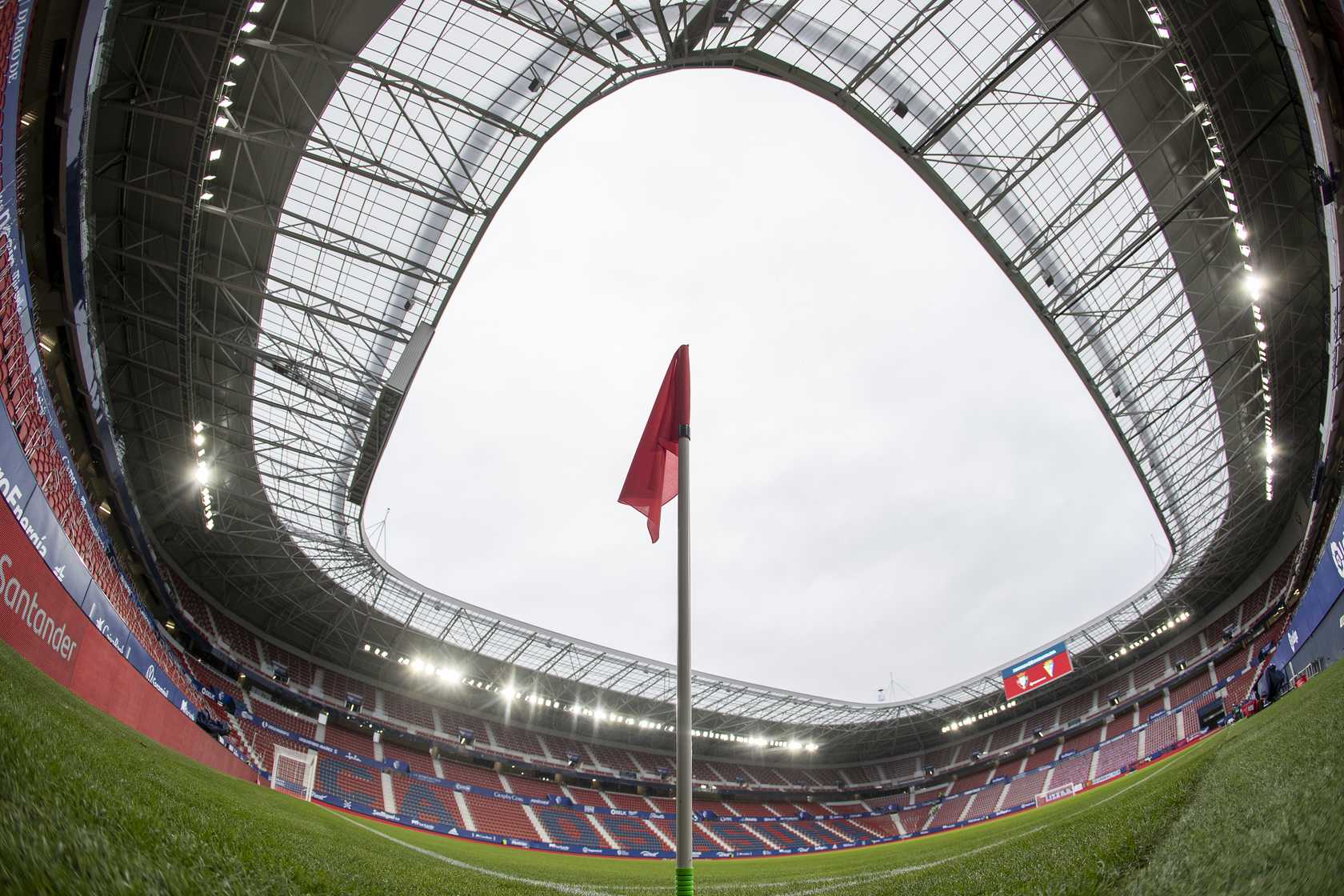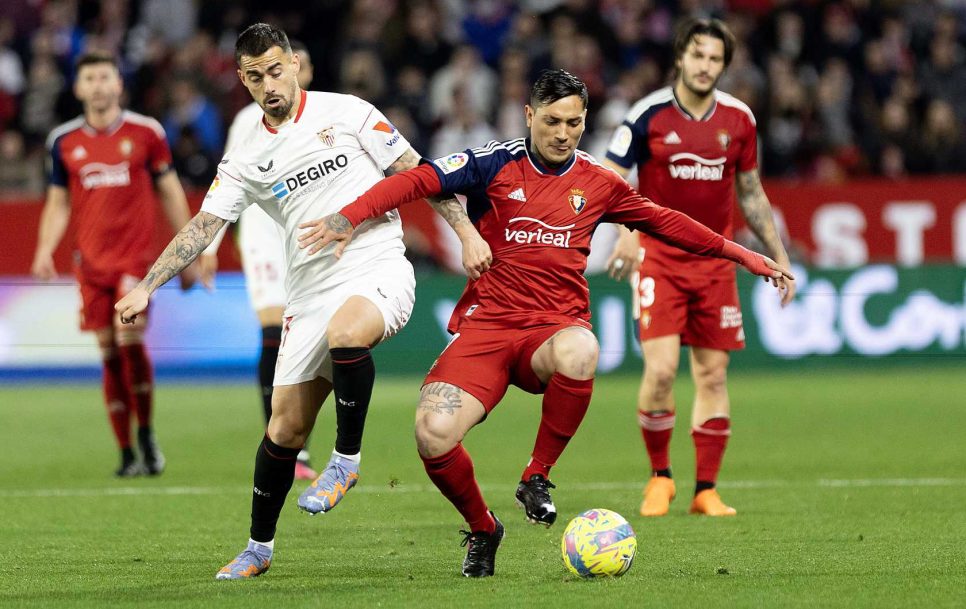First fight the bulls, then the established order
To the untrained eye, they barely matter, never mind about standing out. But maybe it is now time to pay closer attention to what is going on at El Sadar.
Estonians are notably proud of their origins. “In every port in the world, at least two Estonians can be found,” wrote Ernest Hemingway in To Have and Have Not – and we have been quoting him ever since the story was published in 1937.
11 years earlier, Hemingway’s novel The Sun Also Rises helped a certain festival gain international fame. The writer was enthusiastic about bullfighting and, as a frequent participant at the Festival of San Fermin, his personal experiences were central to the plot. After more than 300 years, the festivities became renowned internationally.
Now, roughly a million people gather in Pamplona every July to participate in the encierro, the running of the bulls. Broadcast live on national television and free of charge, it is meant to be an 875-meter rush of pure excitement, fear, and danger – since record-keeping began in 1910, 15 people have left their lives on the fenced track. But that is the kind of sport Pamplona loves.
They have a bull ring, probably the most famous one in the world, which seats almost 20 000 people while the local handball team, European champions in 2001, had to fold due to a lack of funds. They are very proud of five-time Tour de France winner Miguel Indurain, who originates from the outskirts of the city. But he was just a man riding a bike, was he not?
“It is by riding a bicycle that you learn the contours of a country best, since you have to sweat up the hills and coast down them,” as Hemingway put it. What cycling is to contours, football is to culture.
A club to love
There is a local football team too, founded in 1923 and named “health” in Basque. Whether they are a part of Basque Country is a heated debate better left for some other time, but they still have to compete for players within the region. The rivals include Athletic Bilbao with their Basque-only policy, as well as Real Sociedad, Eibar, and Alaves.
But in Pamplona, the local heroes play for Osasuna. A club yet to win a trophy, unless one counts the lower divisions; twice, they have been fourth in La Liga, in 1990/91 and 2005/06, but never made it to the Champions League. In 2005, they lost the Copa del Rey final to Real Betis. By the standards of success in football, their 103-year history was just summarized in just 45 words.
The current squad, to be honest, sounds made up too. Sergio Herrera, Nacho Vidal and Juan Cruz could as well be generic players in the FIFA video game. There are four players named Garcia on the roster (Unai, David, Ruben, and Kike). There is a Gomez, a Sanchez, a Hernandez, and a Fernandez. Maybe one would recognize the Croatian striker Ante Budimir or Ez Abde, a young Moroccan winger on loan from Barcelona, but there are no well-known stars.
And yet they are a pride of the town. For decades, Osasuna was known as a tough team to beat at home, a bullish, physical, long-ball side probably inspired by the encierro. In the 1990s and 2000s, it came to a point where more talented players felt they had to make the two-hour drive to Bilbao very early; Basque legends Mikel San Jose, Fernando Llorente, and Iker Muniain are all from Pamplona but never featured for Osasuna.
Javi Martinez, possibly Osasuna’s most successful graduate, also left for Bilbao without making an appearance for the first team but Cesar Azpilicueta, Raul Garcia, Nacho Monreal, and Mikel Merino all featured heavily. At one point, having been relegated from La Liga and in serious debt, Osasuna had to fast-track the integration of players from the academy. Although it was their only option, it also proved to be the best one.
Success is lurking around the corner
The current squad fighting for a top-six finish in La Liga has around ten homegrown players. They are one of just four professional football clubs in Spain still fan-owned, and have connected to the locals in a way few others can. Those pulling on the shirt are the same guys who run from the bulls.

As a result, the atmosphere at El Sadar can be electric when packed with around 23 000 people. It can supposedly be one of the loudest stadiums in the world if measured by decibels. And they focus on the bigger picture, too.
“It is true there are times when you can’t compete in certain conditions but we have to fight with our weapons. We have to work a lot,” explained club academy director Patxi Punal to The Independent. “We are conscious that not many kids actually make it. We are working to create footballers for our first team, but also people who have more than football.”
In that sense, they are fulfilling a destiny and living up to the name. After 32 games this season, they are ninth in the table, not far from European places. More importantly, for the second time in 103 years, they made the Copa del Rey final. In the semi-finals, Osasuna overcame Athletic Bilbao in an all-time epic battle.
The final hurdle? Real Madrid. 68 domestic trophies, 21 international trophies, best of the best of the best. They want the trophy too, making their first final appearance since 2014. A magnificent opponent for anyone, but on their last three visits to the Bernabeu, Osasuna have held their own and returned with a draw. Now they meet in Seville, on neutral grounds.
May 6th, 2023 will be a Saturday etched in the history of Osasuna one way or the other. Lifting the trophy would matter a whole lot, but the next morning, they will be back at the training ground. They are proud of who they are, and that will not change. One day, the trophies will follow.







